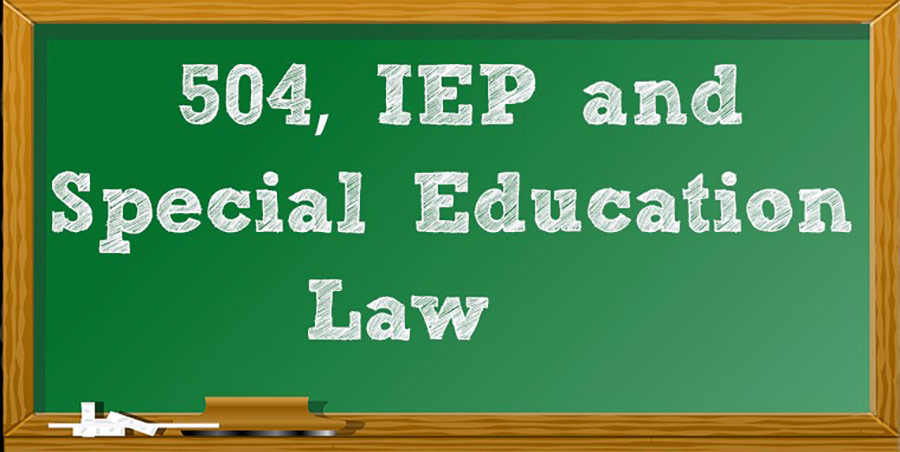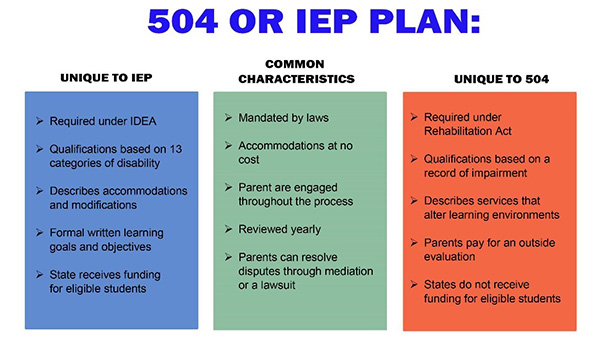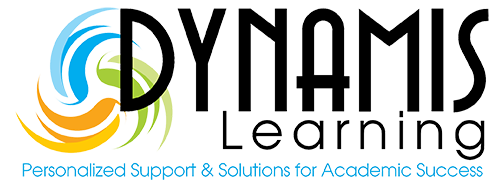 So, you have been told that your child is qualified to receive some special services at school to help combat learning difficulties in the classroom. You hear terms like 504, IEP, ADA, FAPE, accommodation, and modification. If it all sounds Greek to you, it may as well be! You may be saying to yourself, I don’t know where to start. Better yet, which of these programs is best for my child? If you have even a slight wonder, please read further. As we continue this multi-part blog series of programs offered in schools, this week we will delve into what each of these mean and how each might benefit your child.
So, you have been told that your child is qualified to receive some special services at school to help combat learning difficulties in the classroom. You hear terms like 504, IEP, ADA, FAPE, accommodation, and modification. If it all sounds Greek to you, it may as well be! You may be saying to yourself, I don’t know where to start. Better yet, which of these programs is best for my child? If you have even a slight wonder, please read further. As we continue this multi-part blog series of programs offered in schools, this week we will delve into what each of these mean and how each might benefit your child.
As we discussed last week, when your school first notifies you there might be a reason for concern, they inform you about the RTI Process. (For more information on the RTI Process, please click Here.) With your approval, the school begins to collect various pieces of information and data related to your child’s academic performance, along with other social and developmental items. As these pieces fall into place, and you wait for the outcome and the next meeting, take some time to understand the following:
 Special Education Terms to Know:
Special Education Terms to Know:
Americans with Disabilities Act (ADA): A civil rights law that prohibits discrimination on the basis of disability in schools, workplaces, and public spaces.
Individuals with Disabilities Act (IDEA): An education specific law that requires schools to provide special education services to kids who qualify
Section 504 (504): Part of the Civil Rights and Rehabilitation Act that prohibits discrimination on the basis of disability when schools receive federal funding.
Free and Public Education (FAPE): Under IDEA, students with a qualified disability are guaranteed the right to a Free and Public Education (FAPE) in the least restrictive environment possible (LRE)
Accommodation: a tool or procedure that provides equal access to instruction and assessment for students with qualified disabilities. These will be discussed and included in an IEP or 504 plan your child receives. Examples include: typing instead of writing, preferential seating, extra time on tests and assignments, frequent breaks,etc.
Modification: a change in what a student is taught or is expected to learn. This term is also included in IEP or 504 plans and often paired with accommodations to help make a positive impact on a student’s outcomes. Examples include: Using a different standard for grading, learning different material than the rest of the class, being excused from particular projects
As you prepare for your meeting, you should know that your child may be eligible for either one of two “plans” that are provided by the above-mentioned laws: The 504 plan and the IEP plan.
An Individual Education Plan (IEP) and a 504 Plan (504) are similar in some ways but different in others. Both are mandated by two different federal laws.  The 504 plan was mandated by the Civil Rights and Rehabilitation Act of 1973 and though it was somewhat limited in its scope, it put in place for further more comprehensive legislation known as the Individuals with Disabilities Act (IDEA) years later. Both laws have been amended through the years, but both are still used in special education today.
The 504 plan was mandated by the Civil Rights and Rehabilitation Act of 1973 and though it was somewhat limited in its scope, it put in place for further more comprehensive legislation known as the Individuals with Disabilities Act (IDEA) years later. Both laws have been amended through the years, but both are still used in special education today.
Your child’s teacher(s) and school personnel will help provide you with choices and how each would benefit your child, but it will ultimately be up to you, the parent, to decide which you feel is best for your child. You know your child, you also need to know your rights pertaining to special education. If you feel you need more help guiding through the maze of special education, please feel free to contact us HERE to set up a FREE consultation. We have teachers who are certified in 504/special education and who are always abreast of the current laws and how they would benefit your student. Continue to join us next week as we discuss how to prepare for the special education eligibility meeting.
